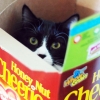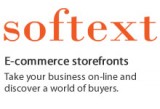
Your packaging decisions might seem trivial, but they’re not. It will be the first thing a consumer sees–and you want it to be a joy to dive into.
With toddlers running around our homes, we’re always reminded how important packaging is.
Like most kids their age, when a box arrives, our one-year-olds often obsess over the wrapping–and completely ignore the gift inside. While we adults usually want what’s inside the box, we’re usually just as enticed by good packaging.
And there’s no denying that the first thing a customer will notice is your packaging. So how do you create smart, branded packaging that is attractive and also conveys your company’s message?
When we set out to create Altruette, we had a specific look in mind for our packaging but we didn’t know how to turn our concept into a finished product. Like most first-time entrepreneurs, we had zero expertise when it came to packaging. We admired the shape of a box that Lee had stumbled on years earlier but had no idea how to actually get it made.
There are numerous box makers who are easy to find online, but it’s difficult to distinguish one from the other without seeing their products in real life. So Lee set out to a packaging trade show at Javits and found a few promising leads. We priced them out and weighed the quality vs. cost and settled on a German company with an office in California. They did great work–but, even so, it took months to get a sample and to receive our entire shipment.
But when we set out to create a new line for a younger generation (altruette girls), which launches in a few weeks (more on that soon!), we were less sure about what we wanted. We knew we loved our original boxes but we also knew that this next line needed to connect to our original look but work for a younger generation. It had to be more of an evolutionary process and we needed someone to guide us. We asked around but had no luck finding anyone through our network.
So after hitting a few deadends, we went on LinkedIn and started searching. We stumbled on Drina Karp, a freelancer in New York City, who had worked for some pretty impressive brands (Kate Spade, Marc Jacobs, Vera Wang, Godiva and Biotherm). Her portfolio of past clients caught our eye and lead us to reach out to her directly.
We worked closely with Drina to come up with the look of our upcoming launch. We asked her to walk us through the process. Here’s how she does it.
How do you work with clients?
The creative process begins with the concept. This is the most important stage and it’s the most time consuming. Sometimes I have a creative direction based upon a brand’s established identity. With a launch, I have to create a look based upon the ideas communicated to me from the client as to what they hope to achieve. This is where communication is so important. Learning the questions to ask to be able to create a design concept, considering the marketing objectives and intended audience, that will satisfy visually and insure the brand a success. I present my ideas, I receive feedback from the client, sometimes there are revises, and a direction is chosen.
What should the client be thinking about early on?
It is important for a client to be able to communicate to me their needs. Marketing objective, target audience, designs that inspire them, their budget, and any production concerns are all a part of the picture that needs to be communicated so I can create a design that inspires and answers their needs.
How can you test a look of a package before taking it to market?
Most companies create printed “comps” of their designs to get a realistic product that they can look at. This really allows you to judge a product. If anything needs to be changed, you will know it. No one wants to find out after a product is produced that other decisions might have been preferable. Trust me, you’d rather spend money to test the package before the launch rather than end up with thousands of boxes that aren’t perfect.
If I have a vision in my head of what my packaging should look like, how can I communicate that to you? Should I draw something? Should I write down my vision?
Clients are generally inspired by other products they have seen. I ask them for the names of what they like, or what they do not like. It doesn’t have to be a similar product. I can be directed to a website or e-mailed images. If they have a specific thought, they can draw it if they are comfortable drawing, or just share it with me verbally. Depends upon their skill set. I do think it is so important to get a real understanding of the visual history of a company, so I will ask for past products, or printed material that are relevant to our project. Large companies will have created marketing briefs with an analysis of goals and visual direction, which can guide the conversation between the client and myself.
How do you convince clients to let go of their idea (if it’s not a good one!)?
A tough question. I am being hired to give my design direction, and I will always do my best to lead the client to the most satisfactory solution. When a client knows their product and their audience, I find a collaboration between us–my experience with theirs and the back and forth–will lead to the best solution. I am being hired because of my previous work and my design sense. So if I am hired for a project, we are usually in agreement and the conversation flows back and forth creating the best resolution.
Most projects work this way but a client might also see something that they like which does not excite me. I would discuss with them our goal and try to explain how the new idea works, or might not work, to resolve the design. I will do my best to make them happy and give them what they visualize. But I would also present a design that would satisfy us both, bridging any differences.
![]()


